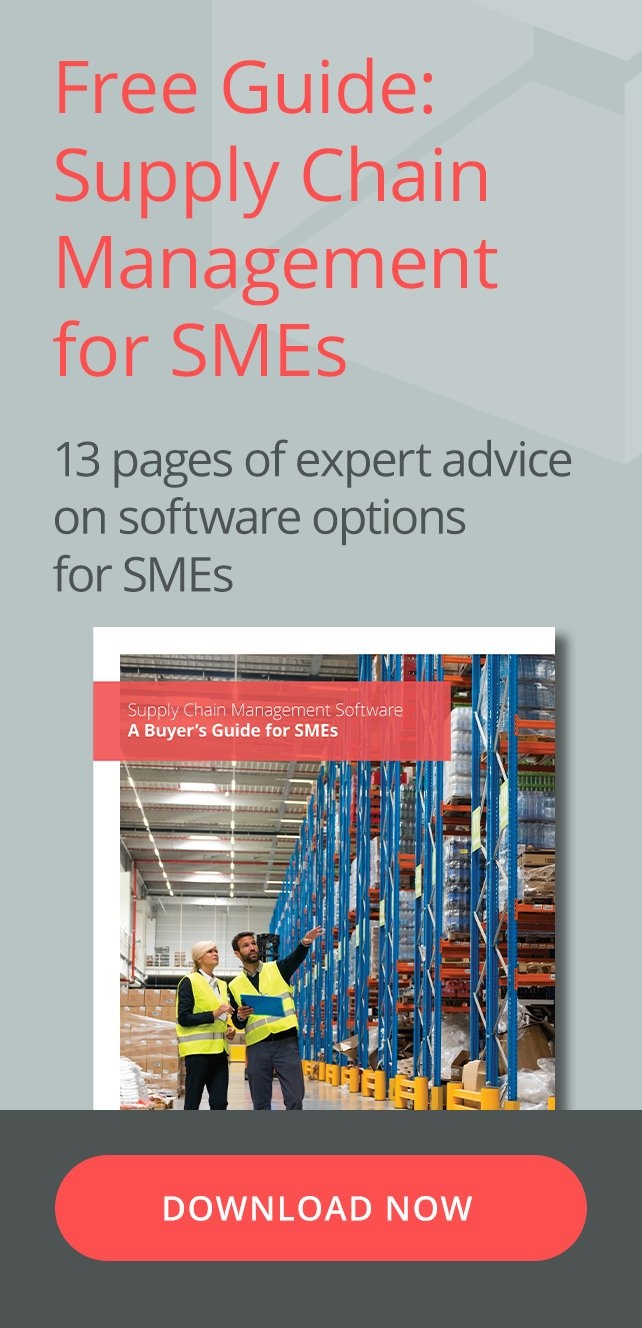It’s a tumultuous time for supply chain operations. Disruptions, understaffing, and an increasingly digital environment mean nothing is guaranteed to be work the same tomorrow as it did today.
To survive these changes, businesses must look to automation.
Read on to learn how supply chain automation works and discover the tools you can use to reduce manual efforts and improve supply chain efficiency.
What is supply chain automation?
Supply chain automation is the use of industry-specific hardware and software to improve efficiencies, reduce mistakes, and get better results from your supply chain processes. Its primary purpose is to replace manual tasks with systems that function with minimal human interference required.
Automation in supply chain management ranges from software tools designed to handle menial data entry tasks to AI-driven robots that can be deployed for automatic storage and retrieval tasks.
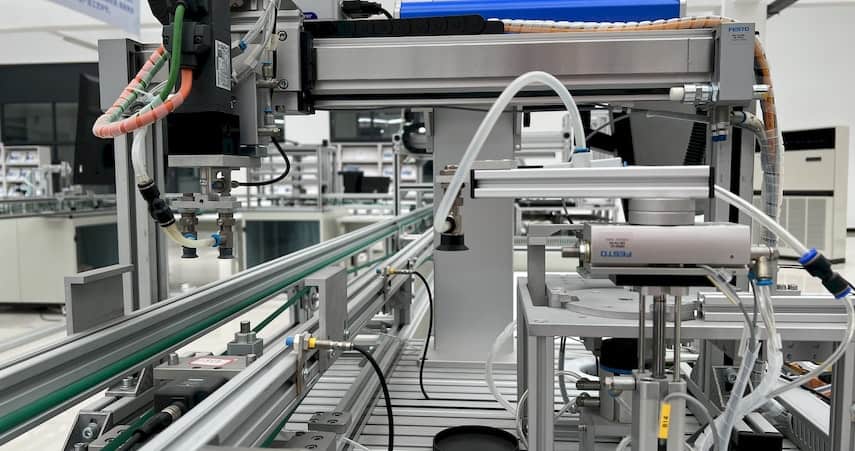
Robotic warehousing equipment is a common example of supply chain automation – but not all automations are physical tools.
Benefits of supply chain automation
Supply chain automation is the direction in which all product businesses are headed, for obvious reasons: It offers ways to cut costs, minimise downtime, and improve productivity.
Let’s explore some of the core benefits of automating your supply chain.
Automate your manual tasks
Manual processes slow productivity and are prone to human error.
Automation allows staff to focus on their most important tasks without getting bogged down by spreadsheets and data input. In some cases, hours’ worth of data entry can be reduced to a single click.
When manual tasks are done automatically, any time normally spent completing them can be reassigned to better managing and growing your business.
Easily collect actionable data
Automation requires data to function, and data can be used for strategic decision-making processes.
By getting better at collecting data, you’ll be able to learn more about your business, including the complex relationships between various metrics.
For example, a business can use collected data to compare product popularity with cost of goods sold to determine where the item sits inside its product portfolio.
Increased accuracy
It’s easy for a human to accidentally put a decimal in the wrong place, miss a field, mistype an address, or ship an incorrect order. This is especially true when those tasks are constantly repeated throughout the day or week.
With error-prone tasks handled by a system which can repeat those tasks indefinitely without problem, you reduce the risk that an error will be made.
Increased customer satisfaction
Reduced errors and faster service directly affect customer satisfaction rates.
In an era where customers increasingly expect fast delivery, any optimisations that improve how customers perceive your brand are a major competitive advantage.
Supply chain automation allows you to mitigate and minimise the risks that lead to unhappy customers and returned orders. More than that, it can give customers such a good impression of your business that their friends and colleagues become your future customers.
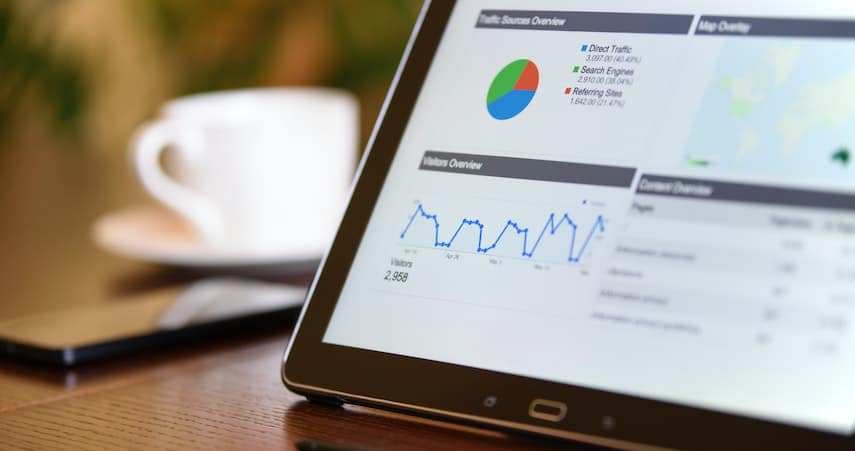
Supply chain automation enables instant data collection and report creation for evidence-based business decisions.
Limitations of supply chain automation
Supply chain automation can be useful for many businesses, but it’s not always the right fit. The size of your business and the number of SKUs in your catalogue largely determine which automation tools are worth the time, cost, and effort.
Here are two of the biggest supply chain automation risks and limitations.
High and ongoing costs
Automation is a highly competitive industry, meaning most supply chain automation tools are state-of-the-art. As such, they often come with a pretty high price tag.
It would be a poor business decision to spend $1 million on warehouse robotics if your annual turnover is $45,000 and the products you sell can be easily accessed and moved without the use of fancy machinery.
In addition, there may be hidden ongoing costs associated with any automation investments.
Examples of additional supply chain automation costs include:
- Consultation fees
- Legal fees
- Taxes
- Subscription costs
- Machinery maintenance and repairs
- Upgrades as systems and tools become outdated
- Cyber security
- Additional storage costs
- Staff training
- Change management
- Software migration fees
- Insurance
These hidden costs can mount up quickly. Always weigh up all the risks and costs associated with new automation equipment before making a major purchase.
Automation is itself limited
Robots simply can’t do everything. A lot of organisations treat modern technology like a magic wand; by waving it over their business, we can surely fix everything, as promised.
But new technology means nothing if there aren’t the right people and processes behind it.
Before investing in tech, you must make sure your business is ready for it and understands precisely how to maximise the investment.
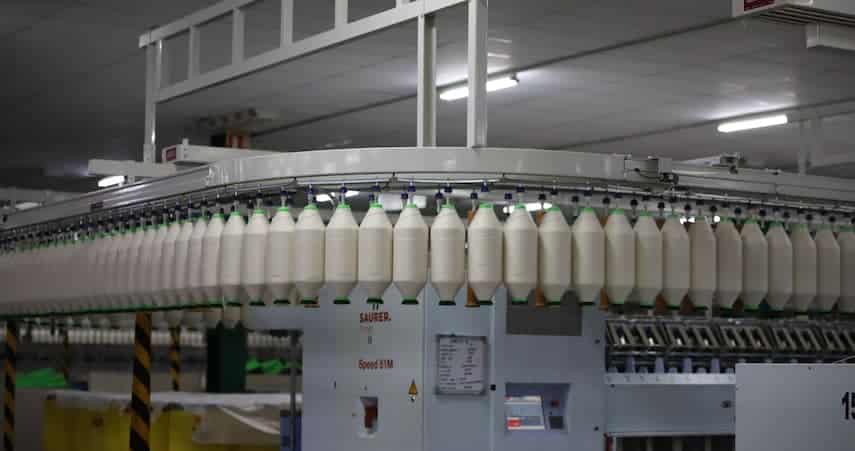
Supply chain automation tools are great for productivity, but they can be a costly expense.
4 common types of supply chain automation
1. Warehouse automation
Warehouse automation refers to any automation deployed to improve the efficiency and effectiveness of inventory storage and order fulfilment processes.
Many receiving and shipping tasks can be automated using warehousing software. These include communicating with customers, supplier management, and handling documentation.
In addition to software, warehouse automation can extend to the physical tools and machines you use to run your warehouse.
Warehouse robotics can help your staff find, move, package or ship goods. And visual factories utilise a degree of automation in the form of pick-to-light systems and automatic LED signs or boards.
2. Inventory automation
Inventory automation is about improving the visibility, accuracy, and speed of inventory data.
To run an efficient warehouse, you need a good grasp on what’s coming in, what’s going out, where each SKU is stored, and how much of it is available. For small businesses only selling or storing a few products, inventory automation may not be worth its cost.
However, as your business grows and you begin to manage dozens, hundreds, or even thousands of different products – often across multiple warehouses or geographical locations – it can be a struggle to keep up without automated software and machines.
Inventory management software helps to streamline the entire stock control process, enabling you to maximise cash flow, production, and inventory tracking to ultimately sell more products and satisfy customer expectations.
Specific complementary tools such as barcode scanners and label printers are also helpful in automating some of the standard inventory tasks a business undertakes.
3. Back-office automation
Back-office automation improves efficiencies through automated data entry and real-time visibility of business insights.
Data entry can be a major bottleneck in supply chain operations. Back-office automation helps solve this by minimising the room for human error and cutting down the time it takes to get it done.
Supply chain software automatically pulls data from orders without manual input and feeds that data into other critical systems. This allows a business to create a single source of truth within their business and track order statuses all the way through the supply chain.
Automation can be applied to most areas of administrating a product business. Financial operations, customer service, and data accuracy can all be improved with modern back-office automation tools.
4. Transport & logistics automation
Logistics automation tools can be used to achieve easier delivery tracking, faster deliveries, and better communication between transport teams.
Software and digital tools are growing in essentiality, particularly as online purchases continue to trend upwards. Customers expect orders to arrive safely and quickly. Logistics software and delivery automation systems help to match these expectations.
Examples of transport and logistics automation include data-driven driver assignment, route optimisation, GPS tracking, and automatic delay alerts.

Automation can also be applied to logistics and delivery management, keeping customers happy and lead times accurate.
Supply chain automation tools
1. Automatic storage and retrieval systems (AS/RS)
AS/RS systems automate the storage or retrieval of goods stored in your warehouse.
They utilise a mixture of warehouse robotics to move goods in an effective, efficient manner. A common example of this is an automated machine that travels across the warehouse collecting boxes off racks.
Other popular types of AS/RS include:
- Cranes
- Carousels
- Vertical lift modules
- Micro-loads
- Stockers
When making a purchase decision around AS/RS products, consider the scale of your business and the costs and risks associated with installing and using that product.
- Learn more: The Positive Effects of Automation for Employees
2. Voice picking
Voice picking is a handsfree system designed to send automatic voice commands to pickers telling them where to go and what to grab. These instructions are based on real-time customer orders.
Pickers wear a special headset and microphone connected to a central intelligent voice agent. As work assignments come in, the system assigns the appropriate staff member and sends them their task via their headset. The picker can then confirm details like location or quantities by responding to the voice agent.
When an assignment is completed, the system assigns the picker a new task using optimised pick paths for increased efficiency.
3. GPS-enabled logistics
GPS-enabled logistics automation uses physical GPS trackers and software to ensure delivery vehicles can be tracked for improved efficiency and safety.
Some common examples of GPS-enabled logistics:
- Route optimisation: AI-driven software predicts the most efficient navigation routes for drivers based on key variables such as time of day, season, tolls, weather, and traffic. Data is sent to drivers in real-time, allowing them to adjust their course if something changes.
- Real-time transit tracking: Live tracking informs shipping managers of who’s driving and what they’re carrying. If there’s a delay, the system can also alert the customer to improve customer satisfaction.
- Automated customer communications: Automate the sending of shipping manifests and other paperwork to customers so that it’s ready when their shipment arrives. This happens as goods are scanned at the shipper’s end.
4. Pick-to-light
Pick-to-light technology is a human-enabling automation tool.
Unlike robotic picking systems, warehouse employees must still go out manually store or pick goods. However, manual picking speed benefits from the assistance of lights, arrows, and other signage.
To create a pick-to-light system, install alphanumeric displays, buttons, or other electronic light-based guides on all of your racks, right down to individual bin locations.
When an operator needs to put something away or grab something out, the system points them in the right direction by illuminating the fastest path. Time ordinarily wasted searching in the wrong places or taking a less-efficient route can be saved, improving overall warehouse picking efficiency.
- Learn more: 10 Useful Warehouse Order-Picking Tips
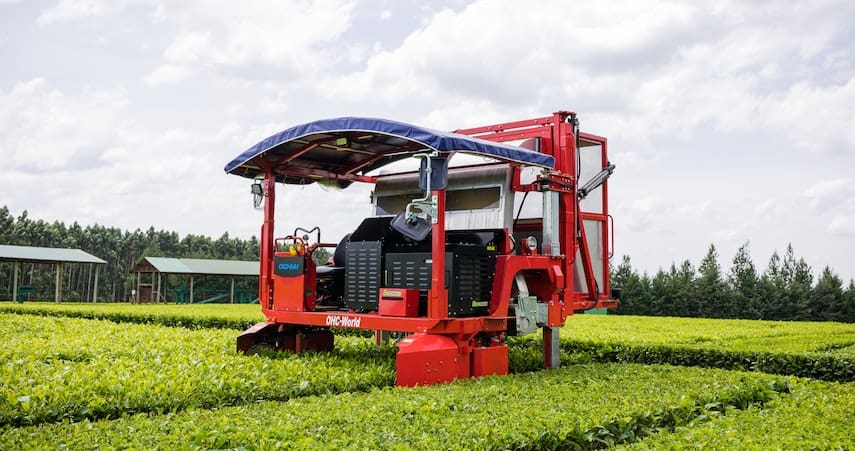
Robotics and machinery can often do the work of ten or more employees, and with increased accuracy.
5. Supply chain management software
Supply chain management software replaces much of the admin associated with supply chain operations.
There are dozens of options available, and the best solution for your business will depend on the features that are most applicable to you.
Here are some examples of supply chain automation software features that may be useful:
- Automatic reorder points: Automatically detect when a particular product has dropped below your stated reorder point and instantly create a new purchase order for it to prevent stockouts.
- Automated customer service: Logistics software and CRM keep customers in the loop about their order. They can track its progress and receive alerts if there are any problems .
- Box selection algorithms: Determine the ideal package size for each order to reduce weight and risk of damage during transit.
- Data reporting: Automatic data reporting compiles your sales and inventory information into regular reports with visualisations to make the information easier to digest.
- Real-time inventory visibility: Check every single item in your warehouse, find out where it’s stored, who sent it to you, and where it needs to go next. Coupled with forecasting software, you can determine the optimal time and quantity to reorder.
6. Financial automation for the back office
Finance teams are frequently bogged down by manual data entry.
Automated systems enable them to get on with more strategic, value-adding work. They can also improve accuracy of numbers, which is critical in finance.
Examples of financial automation functionality:
- Automatic invoice processing: Customer order information is scanned automatically and added to the system. If any of that information is relevant elsewhere (such as shipping info or price), it’s passed through to the applicable team.
- Automated receivables management: Track payment types and match invoices to sales orders. Fully automate the AR process from currency conversion to reconciliation.
- EDI mapping: EDI mapping is the process of swapping a business document from one format to another so that your system can understand it. Automatic EDI mapping recognises certain fields and types of data contained with a document and automatically adds them.
Cloud-based accounting software such as Xero, QuickBooks, and Access Financials give finance teams peace of mind and ensure accurate records.
Supply chain trends for 2023 and beyond
The global supply chain in 2023 remains marred by disruption and risk. The after-effects of COVID-19, war in Europe, and backlogs at the ports all contribute to an unstable and unpredictable supply chain.
“One trend that we will definitely see in 2023 is continuous disruption. And I also think that we’ll see a second wave of supply chain risk. You just need one more issue to flare up and another major shipping lane might close down. We’re definitely in for a bumpy 12-18 months at least.”
To keep up with a volatile market, it helps to be agile.
Clunky systems, ad-hoc processes, and malfunctions can all restrict your ability to stay prepared in the case of major unexpected changes.
But by automating your supply chain, you can defend business performance against supply chain instability. Automation enables flexibility, visibility, and control. And you’ll need all three to stay sharp no matter what comes your way.



